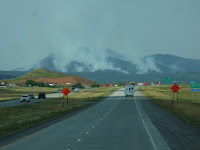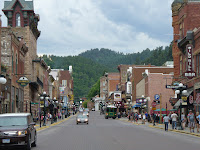In 1910 Glacier National Park was established as our country's 10th national park.

We first entered the park at West Glacier and followed Going to the Sun Road, 52 miles of two lane highway that winds through the heart of Glacier Park and exits on the east side at St. Mary. Going to the Sun was completed in 1923 after 10 years of engineering. Stone work on the bridges, tunnels, guard rails & retaining walls artfully blends into the adjoining hills. In recent years renovations have added more turn outs and scenic overlooks.
The Road starts gently in the Lake McDonald valley, winding past the largest lake in Glacier: 9 miles long, 1.5 miles wide, and nearly 500 feet deep. McDonald Lodge, built in 1913, is now on the historic buildings registry, and still serves guests in it's hotel rooms and cabins.
From the lake, Going to the Sun climbs to "The Loop". The only switchback on the road, it makes a full U-turn, then the road climbs at a steady 6% grade around curves and bends until it reachs Logan Pass. At 6640 feet, this is the highest point accessible by road (many mountain peaks are much higher!)
At Triple Divide Peak, which straddles the Continental Divide, water flows in three directions: toward the Pacific Ocean, Hudson Bay, and the Gulf of Mexico.
Coming down the east side, one gets a chance to see Jackson Glacier, one of a few still present in the park.
Then it's on to St Mary valley, where grassy meadows provide food for elk and other animals. To complete the round trip and get back to our campground on the west side, we took highways 89 and 2 back to West Glacier.

















































